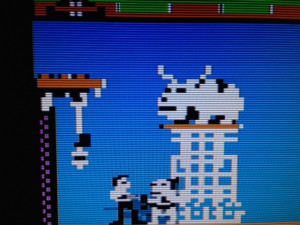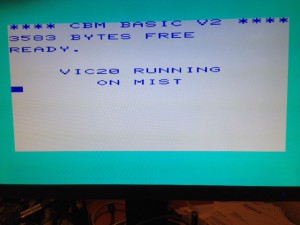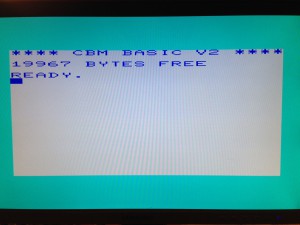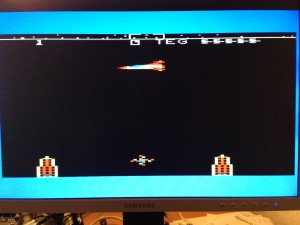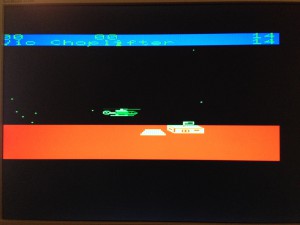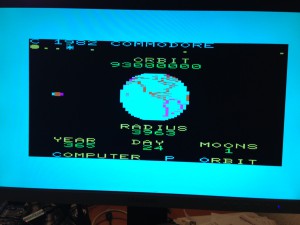The AppleII+ core for the MiST got a small update. I’ve added scanline support which can be enabled via the OSD.
Didn’t know that it was so easy to implement. Retromaster did some good tutorials about his control module and one feature of the osd overlay is scanline support. I looked into the source and adapt it for the MiST.
I can add it to other cores as well if there’s demand.
Retro Computing
Everything related to the good old computer times
vic20 part 4
Sometimes it’s like two steps forward and one step backwards but I already learned a lot of the vic20 inner workings.
The roms with the additional two bytes I mentioned in the previous post are simply autostart cartridge roms “converted” to the .prg format which contains the in memory starting address in the first two bytes.
To upload those roms with the MiST interface would require a continuous block of ram instead of the multi blocks I use currently. But using one big block requires multiplexing of the different signals to the ram (ram and block select).
After I did this the vic20 didn’t work anymore. The screen went mad or – the best case – just blinks with the ready. I didn’t figured out why it behaved like that but using again single blocks for the basic working ram, the screen ram and the screen color ram helped to make it stable again. But cartridge uploads to the big block still won’t work.
I can make an own block for the blk5 memory block again but something is wrong with the multiplexing and it would be nice if I could find and fix it.
More RAM for the vic20 (part 3)
VIC20 for the MiST fpga (part 2)
Found a few minutes today to have a look at the cartridge system. As it was implemented the vic didn’t start the rom when doing a reset. As found in the documentation linked in the previous post the vic expects some magic bytes at a specific address to autostart a cartridge:
|
1 2 3 4 5 6 7 8 9 10 11 12 |
$A000 Low-byte of a 16-bit "hard start" address (to begin at) $A001 High-byte of the 16-bit "hard start" address $A002 Low-byte of 16-bit "warm start" address (restore key) $A003 High-byte of 16-bit "warm start" address Address______Hex value_____Decimal value____ASCII values $A004 $41 65 Capital "A" $A005 $30 48 Digit "zero" $A006 $C3 195 Reverse "C" character $A007 $C2 194 Reverse "B" character $A008 $CD 205 Reverse "M" character |
It looks like that those dumped roms (.prg) have two extra bytes in the beginning. Shifting the access to those roms two bytes up made it work:
As usual the source code can be found in my github repository.
Update 07.12.2014
Looks like that there’re different dumps available. Found a side with .a0 cartridges which doesn’t need the shift.
What’s next: a vic20 core for the MiST
Recently I tried to implement the ram expansion for the Apple II+ but failed again. The test suite didn’t recognize the additional ram or the additional memory access interfered with the disc access which lays in the sdram as well.
A little disappointed I was in need of a simple new project for my little free time. The vic20 was the obvious choice as it has low demand on memory and should be easy to port. But I was wrong.
The first difficulty was to find the right sources. Unfortunately there were no sources on the fpgaarcade site where it derives from. An Internet search revealed several places with several different implementations of the same original sources.
I started with the Papilio port but didn’t succeed. I got a screen output but only with a lot of “@”s.
Even though the sources were almost identically I got more success with the de2 sources. I used BRAM instead of SRAM and the vic20 on the MiST was alive:
But there’s still a lot do to to make it usable. The refresh rate is a little odd and needs a little tuning.
An internal test cartridge and one uploaded via the MiST osd didn’t start.
Due to this the sound output isn’t tested. The vic20 is only unexpanded and needs some memory expansions.
And finally the boot time is rather long and I dunno what’s doing there (testing ram?).
Fortunately I found some resources on the net which might help me to got those topics done:
http://paradroid.automac.se/vic20ram/
http://ftp.giga.or.at/pub/c64/library/vic20.doc
The sources can be found here:
https://github.com/wsoltys/mist-cores/tree/master/vic20
Other sources:
http://forum.gadgetfactory.net/index.php?/topic/1284-vic20/
https://fador.be/fpga/vic20/
http://jderogee.tripod.com/projects/minimig_altcores/Minimig_altcores.html
